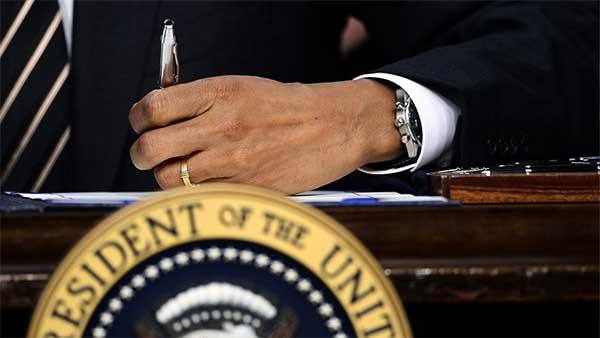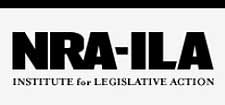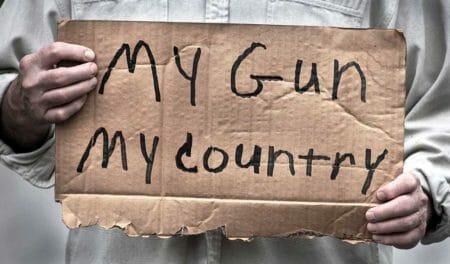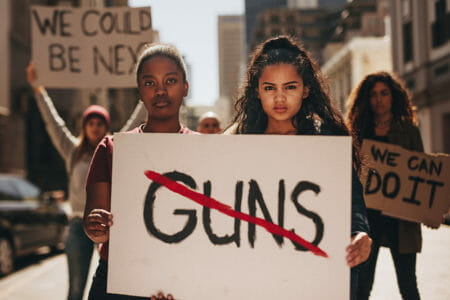

Washington, DC – -(Ammoland.com)- On Tuesday January 5th 2016, the president announced a series of gun control actions in the form of “executive actions” during a lengthy press conference at the White House.
Throughout, the president made it abundantly clear that restricting the rights of America’s law-abiding gun owners will remain his focus in the last year of his tenure.
We saw something very similar in January 2013, when Obama said he would not wait for Congress to act on gun control and unilaterally imposed 23 executive actions on guns, insisting they would help save lives. Then, as now, what was missing from Obama’s statements was any substantiation – or even any convincing explanation – of how his restrictions on the right to keep and bear arms would save lives, or impact public safety in a meaningful way.
Once again, we were asked to accept as an article of faith that diminishing the rights of the law-abiding will somehow influence the actions of violent criminals or others intent on harm.
Anti-gun elites and groups had been proclaiming for weeks that Obama was going to “close the private sale loophole” with one of his executive actions. What the president did, however, was something entirely different. He essentially warned gun owners that lawful behavior might not be, in fact, lawful.
Thanks to a carefully drafted statute enacted in 1986, the president had relatively little room to maneuver in this regard. Those reforms were part of the NRA-supported Firearm Owners’ Protection Act. They were enacted specifically in response to abusive practices by the ATF, which included treating occasional sales of personal firearms as unlicensed “dealing” or seizing private firearm collections, on the pretext that they were the “inventory” of illegal “dealers.”
At the end of the day, the administration’s big move on background checks was, instead, a 15-page brochure or “guidance” which explains the relevant federal statutes and regulations concerning firearms dealing and summarizing its view of the controlling case law. Even though the president cannot unilaterally expand the law, he can still instill fear in gun owners and intimidate them into believing that private transfers are now illegal. ATF can take his directive push the envelope with marginal cases that would be ignored in a less agenda-driven administration.
They may well be looking to “make an example” of somebody, especially in the realm of sales advertised online.
Obviously, chilling otherwise lawful firearms transfers could be just as effective as restricting such activity with passage of a new law or regulation. There can be little doubt the president knows this and why he and administration officials have repeatedly said, “even 1 or 2 sales” can make one a dealer.
Based on evidence from past practices, the administration will likely try to have it both ways – revoke licenses for “dealers” who don’t sell a “sufficient” number of firearms, but prosecute those who sell a small number of firearms without a license. In the 1980’s for example, there was evidence of ATF revoking the FFL of a person because he only sold three guns during the year, while simultaneously prosecuting another person for selling three guns that year without a license. And during the Clinton administration, after ATF had forced low-volume private sellers to become FFLs, the agency then aggressively reduced the number of FFLs for lack of business activity.
On another front, one of Obama’s other announcements was that the Social Security Administration (SSA) continues to work on combing the rolls of its beneficiaries to find pretexts to report them to NICS as “mental defectives.”
We had reported on this effort last summer, after the LA Times initially broke the story. The acting secretary of SSA assured Congress that the agency did not intend to follow the lead of the Veteran’s Administration and arbitrarily report every beneficiary that had another party appointed to assist the beneficiary with management of finances. Nevertheless, by the administration’s own admission, the pending move could affect 75,000 Social Security beneficiaries a year.
To date, SSA has not released details of its plan, but it appears that its rollout will at least be a formal and public rulemaking process. We will follow developments closely and keep you up to date on information you need to know and actions you need to take.
The administration also finally released its final rule in 41P, a rulemaking that originally would have expanded what amounts to a local law enforcement veto of applications under the National Firearms Act (NFA) to the realm of trusts and other legal entities. Your NRA filed lengthy comments in opposition to that rule, and was joined in that effort by thousands of other gun owners, lawyers, law enforcement officers, and industry members who also registered their disapproval.
As a result, not only does the final rule refrain from expanding the veto, it eliminates it from the NFA entirely, including in the realm of transfers to private individuals.
The NFA’s so-called local “CLEO sign-off” procedure is no more, being replaced with simpler requirement to notify the local CLEO that an application has been filed.
Trusts and legal entities, however, will face more bureaucracy with NFA transactions, as they will now have to identify all “responsible persons” associated with the entity and provide photographs and fingerprints of them to ATF for the purpose of background checks. A responsible person means an individual in the organization who has the power and authority to direct the management and policies of the entity insofar as they pertain to firearms. NRA lawyers continue to comb through the lengthy final rule in 41P, and we will report more on it separately.
Obama also pledged to use the leverage of the U.S. government as the nation’s leading arms procurer to develop and promote the use of so-called “smart-gun” technology. During his press conference, he repeatedly referred to features of his iPhone and iPad and suggested that they could be incorporated into firearms. The White House press release seems to suggest that the plan is to phase in the technology through its adoption first by government agents, with the private sector presumably following suit after that.
Whatever the benefits of tracking features and fingerprint recognition might be in the public sector, however, individuals in the private market has shown little interest in trusting their safety and freedom to such technology. Time will tell what, if anything, will come of this. Although NRA is not opposed to the development of new firearms technology, we do not believe the government should be picking winners and losers in the marketplace. As with all advancements, the market itself should be the driver, with consumers the ultimate arbiter of which product developments will succeed.
Indeed, the onerous effects Obama’s executive actions in 2013 are not fully realized. Similarly, it will take time for the impact of his latest actions to be fully felt and understood.
In the meantime, Obama continues his kingly rein, criminals and terrorists continue to blithely ignore the law, and the rest of us are left to parse through vague and confusing federal proclamations and “guidance” materials to hold onto what’s left of our rights.
About:
Established in 1975, the Institute for Legislative Action (ILA) is the “lobbying” arm of the National Rifle Association of America. ILA is responsible for preserving the right of all law-abiding individuals in the legislative, political, and legal arenas, to purchase, possess and use firearms for legitimate purposes as guaranteed by the Second Amendment to the U.S. Constitution. Visit: www.nra.org





Time for “We The People” to issue our own Elective Action to stop this criminal from forever ruining this country!
Obama has set the trend. Now even governors and mayors are using ‘Executive Orders’ to circumvent laws and policies they disagree with. That’s why things like ‘Sanctuary Cities’ that protect illegal aliens from deportation exist.